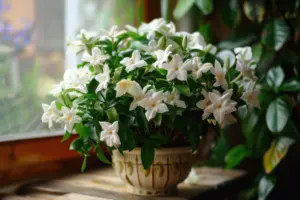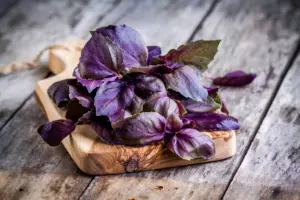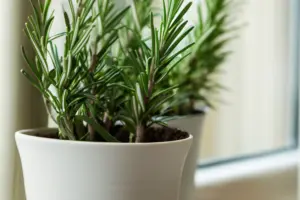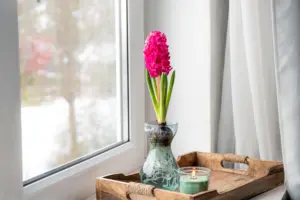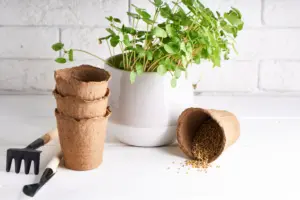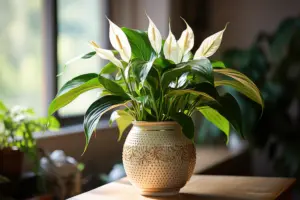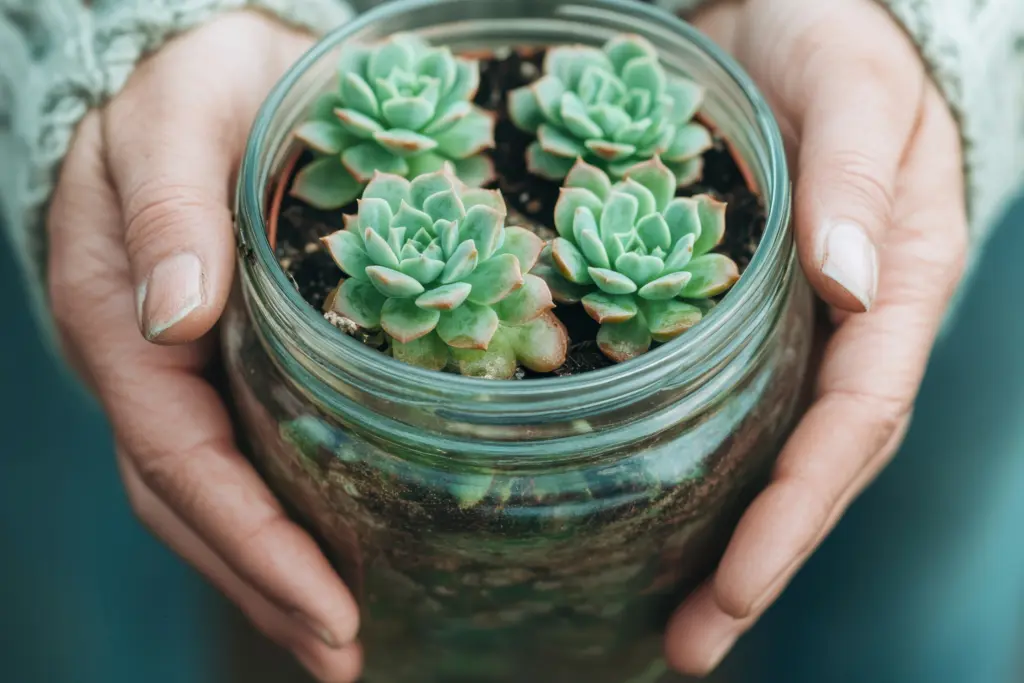
Creating a succulent terrarium is not only fun but also gives you a mini, low-maintenance ecosystem that can thrive inside your home. Terrariums aren’t just beautiful. They’re low-maintenance, space-saving, and you can customize them however you want. You can even make more than one and in any size you like. That’s why mastering how to make a succulent terrarium is a great skill to have, you can even make one in a jar. When you know how to make them, you can create whimsical pieces of unique, living, home décor that you’ll love.
Making a succulent terrarium in a jar is a simple, rewarding project that won’t take more than an afternoon to put together. In this guide, you’ll find everything you need to know, from what materials you’ll need to easy, step-by-step instructions on how to create your very own succulent terrarium in a jar.
- What is a Succulent Terrarium and Why Make One?
- Materials You’ll Need to Make A Succulent Terrarium in a Jar
- Step-by-Step Guide to Making a Succulent Terrarium in a Jar
- Best Types of Succulents for a Terrarium
- How to Care for Your Succulent Terrarium
- Signs of Common Issues and How to Fix Them
What is a Succulent Terrarium and Why Make One?
What is a succulent terrarium?
In short, it’s a mini garden contained within a container usually made from glass and filled with succulents. But what makes terrariums special is that they create a little ecosystem of their own. In a closed terrarium, humidity builds up, and the plants recycle water. Open terrariums, like the ones you make with succulents, allow for airflow and keep things drier. Perfect for those little desert plants, like succulents, that hate soggy soil.
Why should you make a succulent terrarium?
Succulents have this unique ability to brighten up a space, and a terrarium gives them a modern, artsy twist. Plus, they don’t just look good; they brighten up your home and your mood. There’s something magical about seeing your little plants thrive in a tiny glass world.
They bring nature indoors, and succulents are perfect for open terrariums which can fit with any style of home décor. If you like house plants a terrarium offers you a way to grow a thriving succulent in a way which makes it feel like you have a mini garden in your house. And who wouldn’t want that?
Materials You’ll Need to Make A Succulent Terrarium in a Jar
You don’t need much to make a succulent terrarium, and honestly, you might already have some of this stuff lying around your home, so it might work out great if your creating on a budget.
Choosing the Right Jar
This is the first step and it’s more important than it sounds. You want a jar that is roomy enough to layer gravel, moss, soil, and still leave space for a few plants. They also need some space to grow and to let air get round to prevent problems later on. A mason jar, a fishbowl, or even an old candle jar, all cleaned out, are great options. Just keep in mind that succulents do best in open containers. Closed jars create too much humidity, which can make your plants rot, so choose a jar with a wider opening. This also makes it easier to plant and maintain your terrarium.
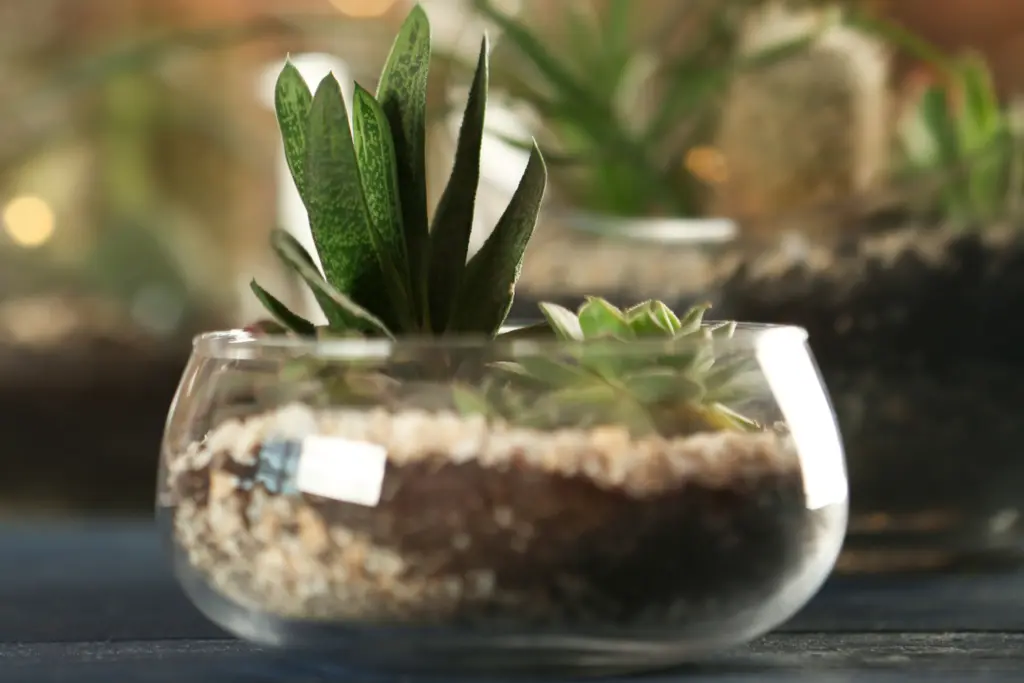
Materials You Need
Here’s a quick rundown of what you’ll need once you have chosen your jar or glass container:
- Jar or glass container
- Succulents: Look for small ones like haworthias, echeverias, or jade plants.
- Gravel or small pebbles: This is crucial for drainage. If water cannot drain your plants won’t survive.
- Sphagnum moss: This is your barrier layer to help with drainage.
- Activated charcoal: You might skip this if you’re doing an open terrarium, but it helps prevent mould and odors and is good practice.
- Cactus or succulent potting mix: Regular potting soil is too dense for succulents.
- Decorative stones or sand (optional): Adds a little flair and makes it look polished.
You can find most of these at a garden center, or online at Amazon, and they’re usually affordable.
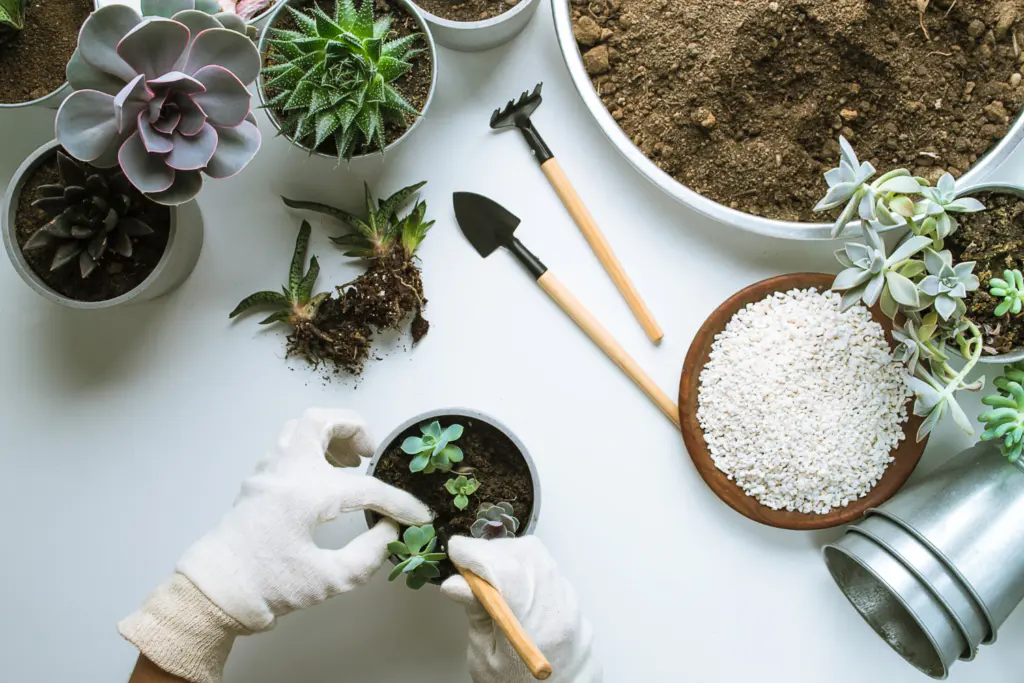
Step-by-Step Guide to Making a Succulent Terrarium in a Jar
Making your own succulent terrarium is really just a series of easy steps.
Step 1: Prepare Your Jar
Start with a clean, dry jar. If it’s dirty, give it a good wash and let it dry completely before you begin making. Any leftover moisture can create mould, which is the last thing you want for your succulents.
Step 2: Add Gravel for Drainage
Layer a couple of inches of gravel at the bottom of your jar. This is essential because succulents hate soggy soil, and gravel allows excess water to escape from the soil layer.
Step 3: Add a Moss Layer
Sphagnum moss is a great choice for the moss layer as it can hold up to 10 times its weight in water. Placing a layer of this moss compact over the top of your gravel before putting your soil in will help with water drainage. The moss is important as it can hold onto the water until the soil needs it. It’s sometimes called the barrier layer.
Step 4: Add Activated Charcoal
If you’re using an open jar, this step is optional, but recommended. A thin layer is activated charcoal to a maximum of maybe half an inch will help to deter mould and keep your terrarium healthy.
Step 5: Add Cactus or Succulent Soil Mix
Layer in the soil, about 2-3 inches depending on your jar’s depth. Succulent soil is lightweight and drains quickly.
Step 6: Arrange Your Succulents
Always start with the largest succulent you have chosen and build around it. Try not to overcrowd them; these plants need space to breathe. Experiment with succulents of different textures and shapes to give your garden depth and make it more interesting. Remember to handle the roots gently as they’re fragile.
Step 7: Add Decorative Elements
This step is optional, but if you’re feeling like going the extra mile and theming pr personalising your terrarium further, add some decorative stones or a layer of sand on top. You can even add in a character figurine. Just remember not to overdo it and let your succulents be the star as they have such unique patterns and textures on their leaves.

Best Types of Succulents for a Terrarium
If you’re not sure which succulents would be best for your terrarium, here are a few easy going succulents that thrive in terrariums:
- Haworthia: Small, spiky, and super low-maintenance.
- Echeveria: These come in rosette shapes and pretty colors.
- Jade Plant: Another hardy option, and it grows slowly.
- Zebra Plant: Striking stripes make it stand out.
- String of Pearls: Adds a cascading effect if you like a fuller look.
If you have a compact jar setup go for mini succulents, which are bred to grow smaller than the general variety. They also look really cute.
How to Care for Your Succulent Terrarium
Now that you’ve set up your succulent terrarium in a jar, you’ll be eager to keep them thriving. Here’s a quick guide with general succulent care tips so you know how to keep succulent terrarium in top shape in its jar. Just be aware that most succulents naturally last 6 months to a few years when cared for properly.
Light Requirements
Succulents are sun-lovers, but placing your terrarium in direct sunlight isn’t always a great idea. Too much direct sun, especially through glass, can turn your terrarium into a tiny oven and scorch the leaves. Instead, aim for bright, indirect light. A windowsill that gets a few hours of morning sun, or a spot near a window that’s well-lit but not overly sunny, usually works best.
If you notice your succulents stretching toward the light or turning pale, they’re probably not getting enough sun. You might need to move the terrarium to a brighter spot, or, if you’re really into plants, consider getting a small grow light. Succulents can also handle artificial light pretty well, so it’s another option if you have low light conditions at home.
Watering Tips
Succulents are very easy to overwater, especially in a small terrarium where water doesn’t drain out. A small spray bottle or even a dropper is your best friend when it comes to watering your succulent terrarium. Just give each plant a tiny bit every two to four weeks, depending on the season and how dry your home is.
A good rule of thumb is to feel the soil with your finger; if it’s completely dry, then it’s safe to add a bit of water. And by “a bit,” you just need to add enough to dampen the soil, not soak it. Misting rather than watering is a better way. Also, remember that terrarium, including open succulent terrariums, tend to dry out more slowly than regular pots, so you don’t need to water them nearly as often.

Temperature and Humidity Needs
One of the perks of succulents is that they’re pretty chill with most indoor temperatures. They thrive in temperatures around 55-75°F (12-24°C). Some will even cope with temperatures dipping as low as 45°F (7°C). But be careful if you live somewhere humid, as too much moisture can cause mould, rot, or make the leaves mushy. They liken a humidity level of 40-50%.
Signs of Common Issues and How to Fix Them
Here are a few common issues that come up with succulent terrariums, along with some fixes to try:
- Root Rot: If the base of your succulents turns mushy or black, it’s likely root rot from overwatering. Try taking the succulent out, removing any affected roots, and replanting it in dry soil. But that will completely take your terrarium so avoid overwatering by taking a less is more approach.
- Etiolation: This is the term for succulents starting to stretch out, looking leggy and pale. Although you can’t reverse the growth you can prevent the rest of the succulent growing in this way by moving it somewhere with more natural or artificial light.
- Mould: If you black mould on the leaves of your succulent it can be a sign that sap-sucking pests like aphids or mealybugs have infected your plant and terrarium. Spraying with neem oil will usually help to resolve the problem.
Conclusion
Creating a succulent terrarium in a jar is such a rewarding experience, especially when you see your plants thriving in their own little world. It’s a fantastic way to bring a piece of nature indoors, and with a few simple steps, you’ll have a mini garden that’s beautiful, easy to maintain, and a real conversation starter. So grab a jar, your favorite succulents, and get started on your own tiny green paradise.

